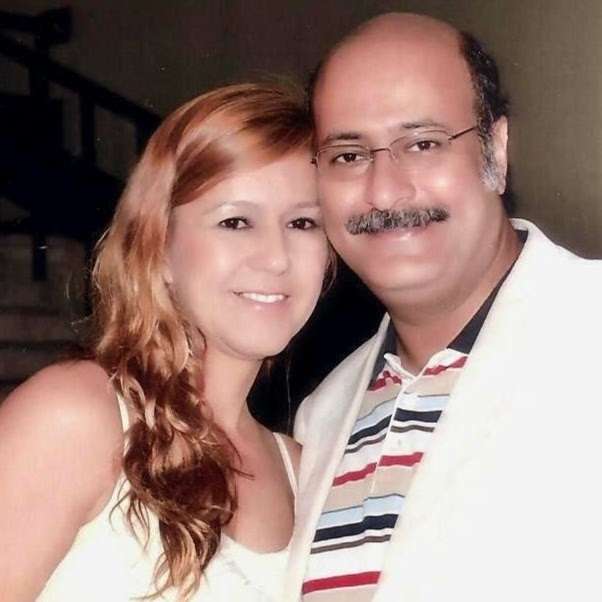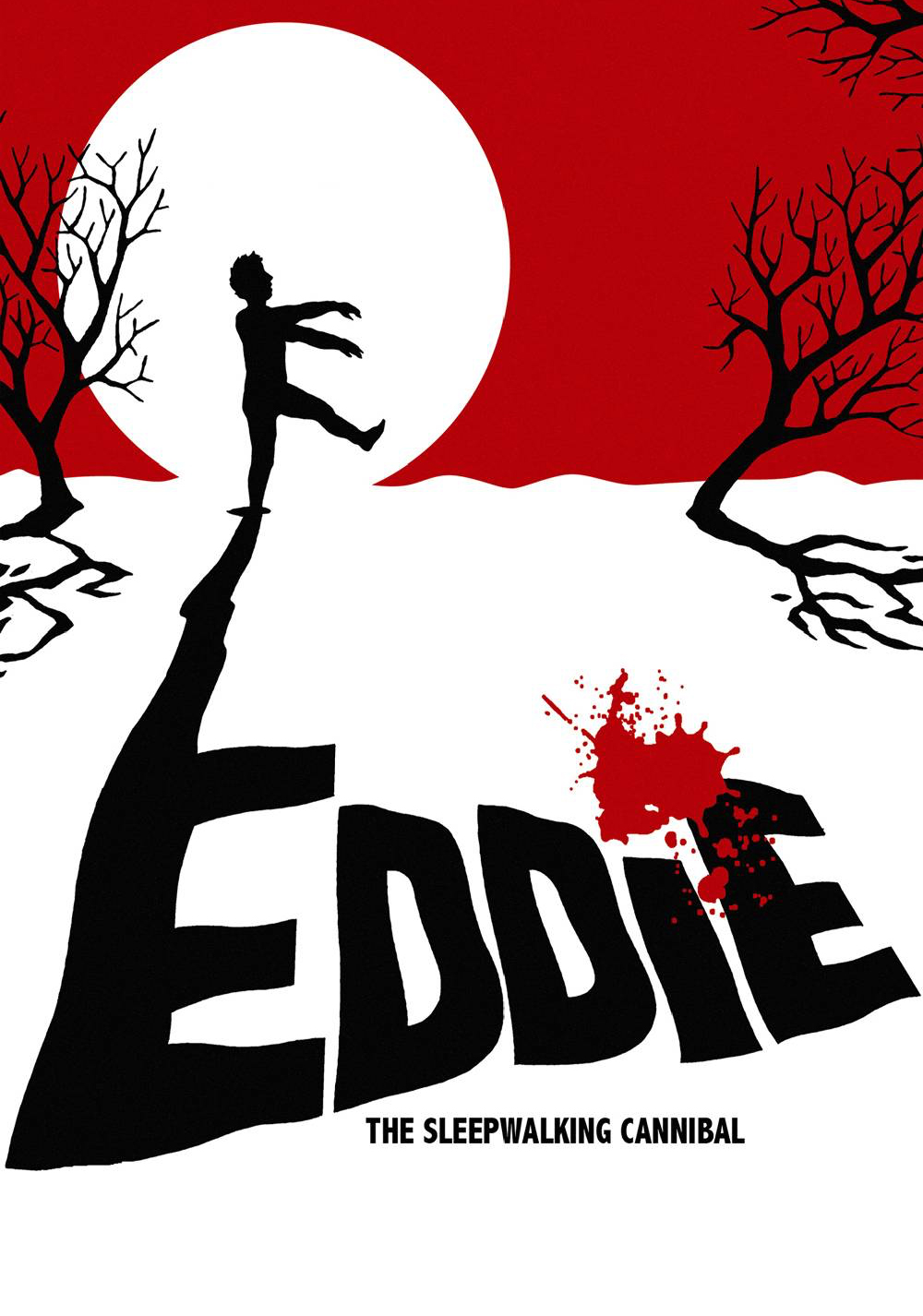by Sherif Awad
Can an artist kill for inspiration? Can art inspire
vicious crimes? These are
the questions raised by
many films I have seen
during Tribeca Festival last
month.
Eddie the Sleepwalking Cannibal, a DanishCanadian co-production was the first film.
It stars Danish actor Thure Lindhardt who
plays Lars, an artist who suffers from creativity
problems. However, his inspiration is only
resurrected in the form of carnage – blood,
guts and scenes of violence. Concerned about
his young protégé, Ronny, Lars’s long-time art
dealer, arranges for him a teaching job in a small
town, at a school for the mentally challenged.
Arriving there, he gets introduced to the deaf
and dumb Eddie, one of the school’s students.
One night, Lars wakes up only to discover that
Eddie is a cannibal suffering from a rare form
of sleepwalking that drives him to crave for the
fresh meat of human beings. Initially horrified by Eddie’s deep dark secret, Lars becomes
enthralled by the not-so-gentle giant who
becomes his muse for a new series of bloody
and violent paintings.
vicious crimes? These are
the questions raised by
many films I have seen
during Tribeca Festival last
month.
Eddie the Sleepwalking Cannibal, a DanishCanadian co-production was the first film.
It stars Danish actor Thure Lindhardt who
plays Lars, an artist who suffers from creativity
problems. However, his inspiration is only
resurrected in the form of carnage – blood,
guts and scenes of violence. Concerned about
his young protégé, Ronny, Lars’s long-time art
dealer, arranges for him a teaching job in a small
town, at a school for the mentally challenged.
Arriving there, he gets introduced to the deaf
and dumb Eddie, one of the school’s students.
One night, Lars wakes up only to discover that
Eddie is a cannibal suffering from a rare form
of sleepwalking that drives him to crave for the
fresh meat of human beings. Initially horrified by Eddie’s deep dark secret, Lars becomes
enthralled by the not-so-gentle giant who
becomes his muse for a new series of bloody
and violent paintings.
I met Boris Rodriguez, the writer-director
of Eddie, who, after studying filmmaking in
Montreal, went to direct the award-winning
documentary Havana Kids in 1996. Rodriguez,
who is making his feature debut in Eddie, told
me that the original draft of the script was
about a werewolf and a novelist in Carolina
and, after few rewritings, became the final film
whose poster’s design, colors and composition,
was given a retro feel with a tribute to the poster
of the classic horror The Exorcist and some
Italian horror film known as Giallo. During the
shooting, Rodriguez discovered how difficult it
was to mix violence and dark humor, which is a
common formula nowadays. But near the end,
he was successful in causing the violence to
escalate from the beginning of the film to the
of Eddie, who, after studying filmmaking in
Montreal, went to direct the award-winning
documentary Havana Kids in 1996. Rodriguez,
who is making his feature debut in Eddie, told
me that the original draft of the script was
about a werewolf and a novelist in Carolina
and, after few rewritings, became the final film
whose poster’s design, colors and composition,
was given a retro feel with a tribute to the poster
of the classic horror The Exorcist and some
Italian horror film known as Giallo. During the
shooting, Rodriguez discovered how difficult it
was to mix violence and dark humor, which is a
common formula nowadays. But near the end,
he was successful in causing the violence to
escalate from the beginning of the film to the
end into a more graphic and detailed climax.
However, Rodriguez did not show us any of
the paintings inspired by Eddie’s crime realized
by Lars because he wanted to leave the recognition to our imagination. Eddie reminded me of
a very old film I have seen in 1980s though it
was released in 1974. Craze starred Jack Palance
as Neal Mottram, a nutty antiques dealer who
starts to sacrifice women to an African idol he
kept in his gallery
However, Rodriguez did not show us any of
the paintings inspired by Eddie’s crime realized
by Lars because he wanted to leave the recognition to our imagination. Eddie reminded me of
a very old film I have seen in 1980s though it
was released in 1974. Craze starred Jack Palance
as Neal Mottram, a nutty antiques dealer who
starts to sacrifice women to an African idol he
kept in his gallery
The second film about art, mayhem and
madness is Francophrenia, a brilliant, cuttingedge collaboration between famed actor and
avant-garde artist James Franco and award-winning filmmaker and editor Ian Olds. A
couple of years ago, Franco signed up for a
guest appearance in one of the episodes of
General Hospital, then brought along a crew
to film behind-the-scenes action on a set at
Los Angeles’ Museum of Contemporary Art
(MOCA), creating a glimpse into the strange
world of celebrity in both its public and private
moments. In that episode, Franco was playing
a deranged artist who was about to commit a
crime while opening his show at the MOCA.
madness is Francophrenia, a brilliant, cuttingedge collaboration between famed actor and
avant-garde artist James Franco and award-winning filmmaker and editor Ian Olds. A
couple of years ago, Franco signed up for a
guest appearance in one of the episodes of
General Hospital, then brought along a crew
to film behind-the-scenes action on a set at
Los Angeles’ Museum of Contemporary Art
(MOCA), creating a glimpse into the strange
world of celebrity in both its public and private
moments. In that episode, Franco was playing
a deranged artist who was about to commit a
crime while opening his show at the MOCA.
Later on, after wrapping up the episode,
Franco contacted Olds who started to
work on this “found footage,” to repurpose
Franco’s material into an experimental
psychological thriller focusing on the
actor’s escalating paranoia. Olds added his
own voiceover as the conscience of Franco
and edited the material to make it look like
Franco is losing his mind on the set as the
line between reality and fiction was blurring with the performance artist Franco
plays in the television soap opera and
the movie star James Franco are in
internal conflict. Olds and fellow
screenwriter Paul Felten worked
Franco contacted Olds who started to
work on this “found footage,” to repurpose
Franco’s material into an experimental
psychological thriller focusing on the
actor’s escalating paranoia. Olds added his
own voiceover as the conscience of Franco
and edited the material to make it look like
Franco is losing his mind on the set as the
line between reality and fiction was blurring with the performance artist Franco
plays in the television soap opera and
the movie star James Franco are in
internal conflict. Olds and fellow
screenwriter Paul Felten worked
on this subjective interior
monologue that underscores
the conflicted relationship
between these various facets
of the same being. The film
is a crazy ride with the
director playing
with
monologue that underscores
the conflicted relationship
between these various facets
of the same being. The film
is a crazy ride with the
director playing
with
many tools: action, reverse-action abstraction,
animation, and multiple-screen imagery, all
set within the context of a dramatic suspense
narrative. Also Franco and Olds succeeded in
using Franco’s celebrity status to create an original work that defies the trajectory of stars who
usually move from soap to silver screen.
After Tribeca, I went to see The Raven
starring one my favorite actors, John Cusack,
in a thriller taking the real-life character of
novelist Edgar Allan Poe into a fictitious
narrative where he faces a lunatic committing horrific murders inspired by his writings.
James McTeigue (V for Vendetta), directed The
Raven with high efficiency and fast-pacing and
succeeding to pull out another one of Cusack’s
intense performances.
animation, and multiple-screen imagery, all
set within the context of a dramatic suspense
narrative. Also Franco and Olds succeeded in
using Franco’s celebrity status to create an original work that defies the trajectory of stars who
usually move from soap to silver screen.
After Tribeca, I went to see The Raven
starring one my favorite actors, John Cusack,
in a thriller taking the real-life character of
novelist Edgar Allan Poe into a fictitious
narrative where he faces a lunatic committing horrific murders inspired by his writings.
James McTeigue (V for Vendetta), directed The
Raven with high efficiency and fast-pacing and
succeeding to pull out another one of Cusack’s
intense performances.

